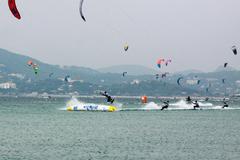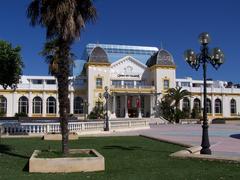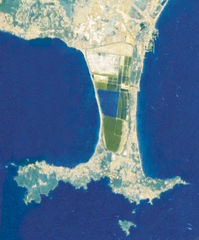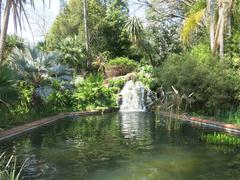Bagaud Island Forts: Visiting Hours, Tickets, and Travel Guide – Hyères, France
Date: 14/06/2025
Introduction
Nestled in the Hyères archipelago off the southeastern coast of France, Bagaud Island is renowned for its blend of historical significance and ecological rarity. While neighboring islands such as Porquerolles and Port-Cros are popular destinations for cultural explorers and nature lovers alike, Bagaud stands apart as a strictly protected nature reserve, closed to the public to safeguard its fragile environment and historic remnants (Bateliers de la Côte d’Azur; PIM Atlas; Port-Cros National Park).
This guide explores Bagaud Island’s military heritage, its strict access regulations, and practical alternatives for travelers wishing to experience the Hyères archipelago’s forts, landscapes, and cultural richness.
Contents
- Strategic Importance of Bagaud Island
- Historical Development of Fortifications
- Architectural Features and Remains
- Modern Role: Conservation and Restricted Access
- Experiencing the Hyères Forts and Alternatives
- Special Events & Photographic Spots
- Practical Visitor Information
- FAQs
- Ecological and Cultural Significance
- Access, Tickets, and Travel Tips
- Nearby Attractions
- Responsible Tourism and Conservation
- Summary & Visitor Recommendations
- Official Sources
Strategic Importance of Bagaud Island
Positioned between Porquerolles and Port-Cros, Bagaud Island historically served as a critical outpost in the defense of the Bay of Hyères (SOF Presentation). From the 16th century and throughout periods of Mediterranean conflict, Bagaud contributed to a coastal defense network that shielded the Provençal coast from pirates and foreign navies.
Historical Development of Fortifications
Early Fortification Efforts
The initial fortification of the Hyères archipelago began in the 1500s under François I, with Bagaud’s strategic location ensuring its inclusion in surveillance and defense plans, albeit with more modest structures than those on Porquerolles and Port-Cros (Bateliers de la Côte d’Azur).
17th–19th Century Military Enhancements
The 17th century saw intensified military investment in the region, spearheaded by Cardinal Richelieu. Bagaud’s rugged terrain limited large-scale construction, but it was nonetheless equipped with batteries and lookout posts designed for early warning and crossfire support within the archipelago’s defensive system. During the Napoleonic era and into the 19th century, temporary batteries and observation posts were maintained, though Bagaud’s military role lessened as focus shifted to more accessible islands (Bateliers de la Côte d’Azur).
Architectural Features and Remains
Unlike the grand stone forts of Port-Cros and Porquerolles, Bagaud’s military remains are understated: low stone walls, foundations, and overgrown gun emplacements built for function over form. These subtle ruins, constructed from local materials, blend into the island’s landscape and are now largely reclaimed by nature (Bateliers de la Côte d’Azur).
Modern Era: Conservation and Restricted Access
Reserve Status and Visiting Hours
Since 1985, Bagaud Island has been classified as a strict nature reserve within Port-Cros National Park. Public access is strictly prohibited—there are no visiting hours, tickets, or tours for the island. Only authorized scientific and conservation staff are permitted to land, ensuring protection of rare plants and seabird nesting habitats (Port-Cros National Park).
Experiencing the Hyères Forts and Alternatives
While Bagaud Island itself is inaccessible, visitors can immerse themselves in the region’s military history and natural wonders by exploring nearby islands:
- Port-Cros: Home to Fort du Moulin and Fort de l’Estissac, both accessible via marked trails and offering guided tours and exhibitions.
- Porquerolles: Features Fort Sainte Agathe, open seasonally with panoramic views and historical exhibits.
Photographic Opportunities: The best views of Bagaud Island are from elevated spots on Port-Cros and coastal paths on Porquerolles, especially at sunrise or sunset.
Educational Resources: Port-Cros National Park provides virtual tours and multimedia guides to Bagaud’s history and ecology.
Practical Visitor Information
Getting There
- Ferries: Regular shuttles depart from Hyères (La Tour Fondue) to Porquerolles and from Hyères or Le Lavandou to Port-Cros. No ferries to Bagaud Island exist due to access restrictions (CNN Travel).
- Local Transport: Both Port-Cros and Porquerolles are car-free; travel by bicycle or on foot is recommended.
Tickets & Fort Access
- Forts on Port-Cros and Porquerolles: Entry fees for forts typically range from €2–€6. Purchase tickets at visitor centers or online.
- Bagaud Island: No tickets or permits available for public visits.
Best Times to Visit
- Shoulder seasons (May–June, September–October): Pleasant weather, fewer crowds.
- High season (July–August): Popular, so booking transport and accommodation in advance is advised.
Conservation Rules
- Stay on marked trails, do not pick plants or disturb wildlife, and take all waste with you.
Frequently Asked Questions (FAQs)
Can I visit Bagaud Island?
No, Bagaud Island is a strict nature reserve closed to the public.
Are there tickets for Bagaud Island?
No; tickets are only available for forts on Porquerolles and Port-Cros.
How can I see Bagaud’s forts?
They are not accessible, but can be viewed from the sea or through virtual tours and educational displays on neighboring islands.
Are guided tours available?
Yes, for the open forts on Port-Cros and Porquerolles, especially during peak season.
Ecological and Cultural Significance
Biodiversity
Bagaud Island is a biodiversity hotspot, home to rare Mediterranean flora, endemic ant species, and important seabird nesting sites. Its surrounding waters are part of protected Natura 2000 zones (PIM Atlas).
Conservation Challenges
Despite its isolation, Bagaud faces threats from pollution, invasive species, and occasional military activity on nearby islands. Ongoing conservation programs focus on habitat restoration and invasive species control.
Cultural Heritage
Remnants of four military structures and historic agricultural terraces attest to centuries of human presence. The island is recognized by the Council of Europe for its exemplary conservation and cultural management.
Access, Tickets, and Travel Tips
- No public access or tickets for Bagaud Island.
- Tickets and guided tours for forts on Port-Cros and Porquerolles are bookable online or at visitor centers.
- Prepare: Bring sun protection, water, and sturdy shoes; islands are best explored on foot or by bike.
- Respect all conservation signage and restrictions to help preserve these sensitive environments.
Nearby Attractions
- Port-Cros National Park: Hiking, snorkeling, and guided nature tours.
- Porquerolles: Beaches, cycling, local markets, and cultural events.
- Hyères Old Town: Medieval architecture and Provençal markets.
- Île du Levant: Noted for its nature reserve and limited public access.
Responsible Tourism and Conservation
Embrace the principles of responsible tourism by strictly adhering to park regulations. This ensures the protection of both natural habitats and historical sites, allowing future generations to enjoy the unique heritage of the Hyères archipelago (Port-Cros National Park).
Summary & Visitor Recommendations
Bagaud Island, though inaccessible to the public, remains a vital part of the Hyères archipelago’s historical and ecological landscape. Its military ruins and rich biodiversity stand as silent witnesses to centuries of Mediterranean history and ongoing conservation success. Travelers are encouraged to explore the accessible forts and landscapes of Porquerolles and Port-Cros, making use of virtual resources and guided tours to deepen their understanding of Bagaud’s legacy. Always respect conservation rules, stay informed via official channels, and support efforts to preserve this remarkable region (Bateliers de la Côte d’Azur; PIM Atlas; SOF Presentation; CNN Travel).
Official Sources and Further Reading
- Bateliers de la Côte d’Azur: The Forts and Batteries of Port-Cros
- PIM Atlas: Île de Bagaud
- Port-Cros National Park: Bagaud Island Reserve
- Provence-Alpes-Côte d’Azur Tourism: Port-Cros
- SOF Presentation
- CNN Travel: Islands of France
For more travel inspiration and conservation updates, download the Audiala app and follow us on social media. Enjoy your journey through the Hyères archipelago, and help preserve its treasures for future generations.








